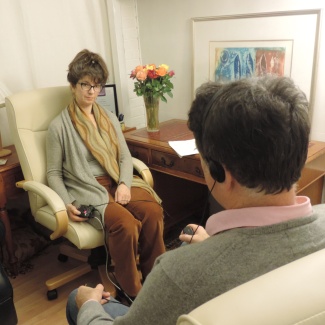- Is EMDR just for people who’ve been in simple traumas like road accidents?
EMDR was first created to deal with single incident traumas, but the healing capacity of this psychological tool has meant a rapid expansion into all forms of trauma including complex PTSD and early life issues.
- How does EMDR differ from CBT?
CBT (Cognitive Behavioural Therapy) requires homework and conscious effort to change your thoughts and feelings whereas EMDR requires no homework.
A simply analogy is that CBT is the equivalent of building a new road in your brain to bypass the old dysfunctional behavioural pathways, whereas EMDR is the equivalent of digging up the old road and replacing it with a new motorway.
- What if I can’t remember what happened in my childhood?
 Clear detailed picture memories are not necessary for successful EMDR treatment as many trauma memories are implicit. Frequently during a traumatic event the body is pumped full of hydrocortisone and adrenalin. These hormones inhibit the storage of explicit memory, thus preventing the details of the event being remembered. However the implicit memory is more feeling-orientated and centred in the body, in other words, the body keeps the score (Bessel Van Der Kolk). This does not matter because EMDR is processing the feelings and does not rely on the explicit memory.
Clear detailed picture memories are not necessary for successful EMDR treatment as many trauma memories are implicit. Frequently during a traumatic event the body is pumped full of hydrocortisone and adrenalin. These hormones inhibit the storage of explicit memory, thus preventing the details of the event being remembered. However the implicit memory is more feeling-orientated and centred in the body, in other words, the body keeps the score (Bessel Van Der Kolk). This does not matter because EMDR is processing the feelings and does not rely on the explicit memory.
- What if I can’t feel?
Again EMDR is a very effective at clearing resistance and opening up memory networks. It is common for clients not to feel at the being of treatment because that is their defence mechanism; then for that to clear.
- What if I believe I can’t be helped?
This is a common blocking belief that can be effectively cleared with EMDR, whether that is through memory work, belief systems or through direct dialogues with the ego states or parts of the internal system that are resistant to change. Such beliefs once began as a survival strategy but now get in the way of full healing and integration.
- How many sessions will I need?
This is a commonly asked question and very hard to answer before the initial assessment. For single incident traumas usually 8-12 sessions of 90 minutes each are required. For more complex trauma the treatment is clearly more complex and takes longer, usually about 12 -18 months. This is considerably quicker than long-term talking therapy that takes 3-10 years.
- What can I expect from an EMDR session
The first few sessions of EMDR therapy require preparation so that you and the therapist feel comfortable with each other, a sense of safety in the room is established as well as safety and grounding techniques practised. Goals for treatment are established and a full history is taken, as well as a genogram or family map prepared. This is to ensure that the best treatment plan is followed to achieve your goals.

During the preparation phase, a selection is made of the appropriate form eye movement, that is looking from one side then the other. This side to side motion of the eyes also known as bilateral stimulation (BLS) as the the left and right hemisphere of the brain is also stimulated. It is this bilateral stimulation that has been shown in studies to rapidly process the trauma memories in much the same way as your brain does in the REM phase of sleep. More research is needed to understand exactly how this happens.
You as the client will choose which form of BLS you prefer: whether that is eye movement, which may involve your eyes following your therapist’s finger from left to right; wearing headphones so audio passes from one ear to the other; holding small alternately pulsing paddles in each hand, or having each knee gently tapped in turn. Everyone is different so any one of the different forms of BLS may be right for you.
In later sessions traumatic memories are processed firstly by selecting a target, this involves being asked with the help of your therapist to:
- Think of a troubling memory, then identify an image of the worst moment of that memory;
- Identify a negative belief about that worst moment (the therapist may ask “what is the worst thing that moment says about you?”);
- Identify emotions and bodily feelings linked to that moment;
- Think about the image and belief while at the same time making left-to-right eye movements (or while paying attention to tapping sensations or sounds that are alternately given from left-to-right);
- To allow your mind to ‘go with’ whatever comes up and just notice what happens.
- This process will be repeated until the memory causes less distress (this may happen in one session, or may take more than one session).
